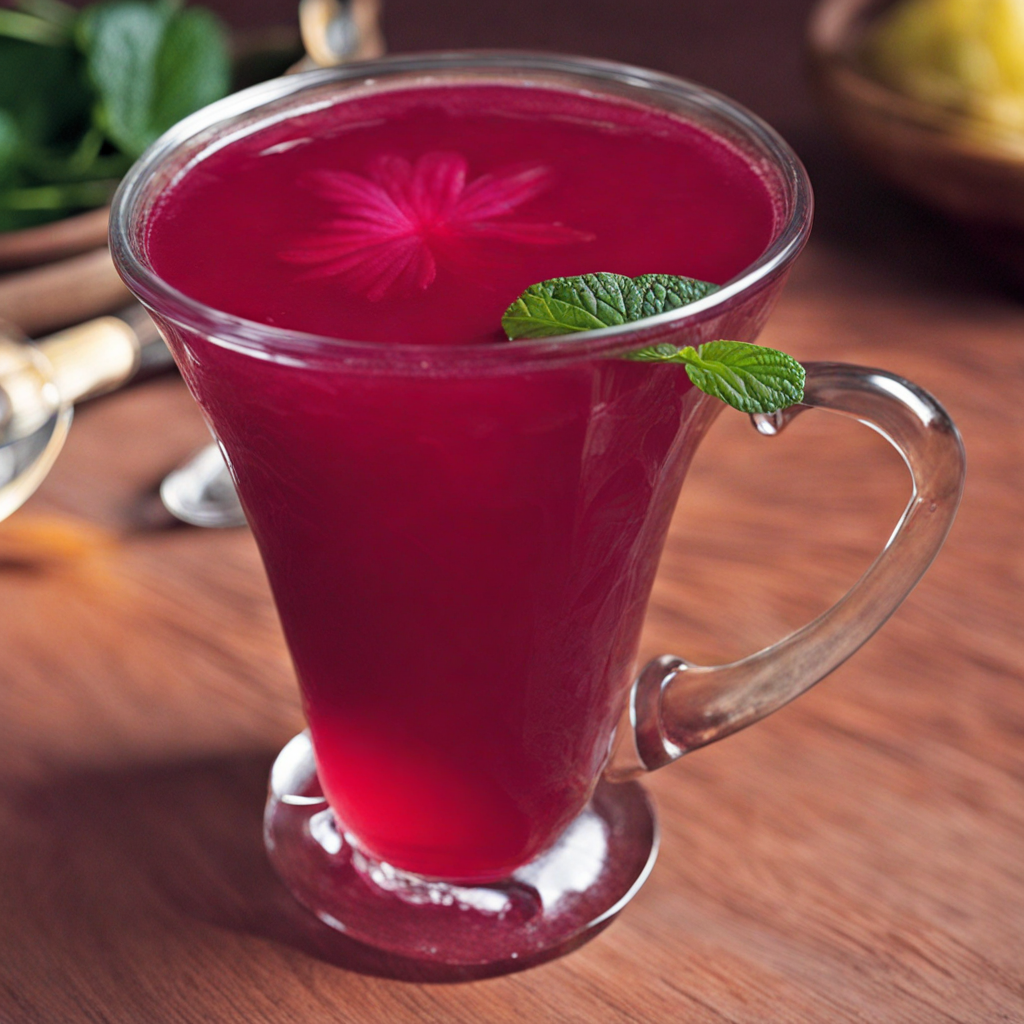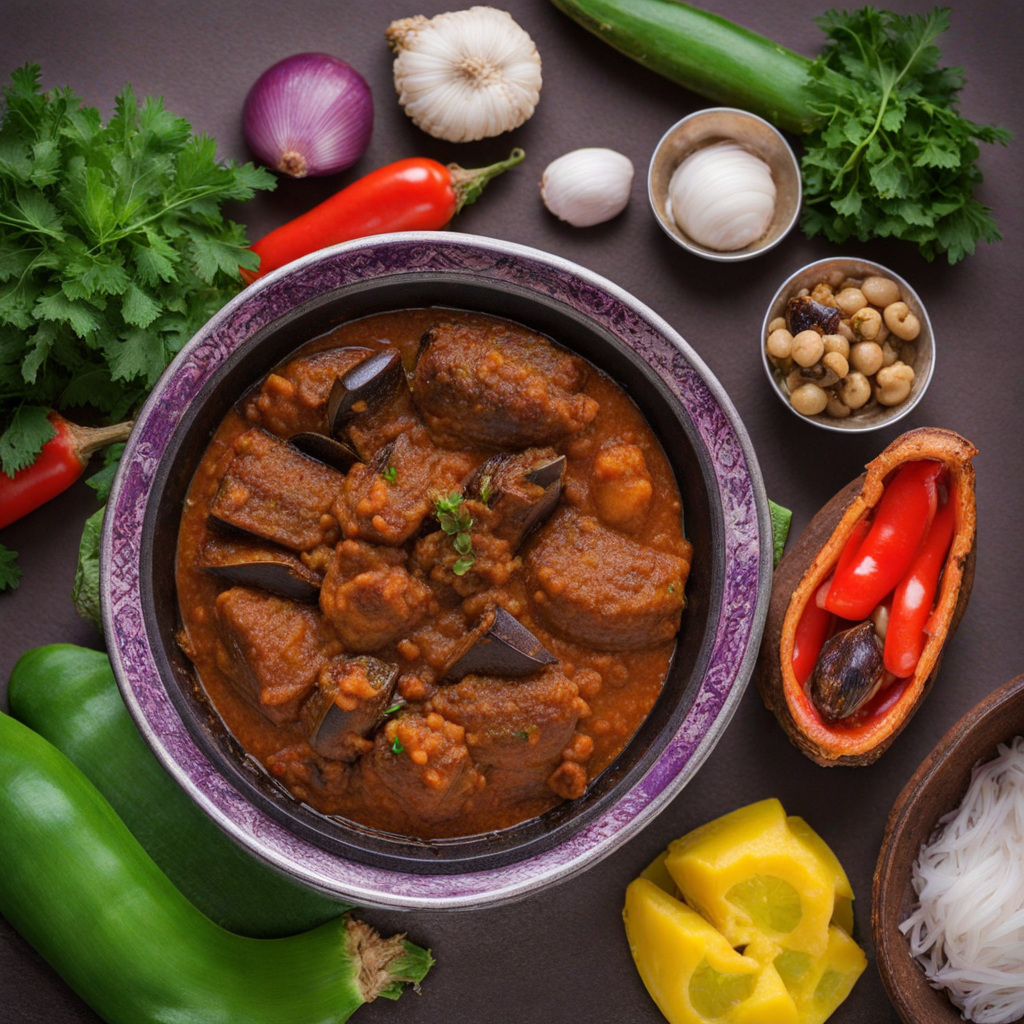Bissap
Bissap is a vibrant and refreshing beverage that captures the essence of West African flavors, particularly in Benin. Made from the dried petals of the hibiscus flower, this drink offers a deep crimson color that is visually striking. The preparation involves steeping the dried hibiscus petals in hot water, which releases their tart and tangy notes. To enhance its flavor profile, sugar is often added, along with various spices such as mint or ginger, creating a delightful balance between sweet and sour that awakens the palate. What makes Bissap truly special is its versatility; it can be enjoyed both hot and cold, making it a suitable drink for any occasion. Served chilled, Bissap is particularly refreshing on a hot day, while a warm version can be soothing during cooler evenings. This drink not only quenches thirst but also serves as a delightful accompaniment to many traditional Beninese dishes, providing a contrast to savory flavors with its fruity and zesty undertones. Beyond its taste, Bissap is celebrated for its numerous health benefits. Rich in antioxidants, it is known to aid digestion, lower blood pressure, and even boost the immune system. This makes it not only a delicious choice but also a nourishing one. As you sip this delightful beverage, you'll experience a taste of Beninese culture, where the communal act of sharing food and drink is a cherished tradition, making Bissap a perfect introduction to the vibrant world of West African cuisine.
How It Became This Dish
Bissap: A Cultural and Historical Journey through Benin Bissap, a vibrant and refreshing drink, is a cherished beverage originating from West Africa, particularly prominent in countries like Benin, Senegal, and Mali. Known for its deep crimson color and tangy flavor, this drink has become a symbol of cultural identity and social gatherings in the region. To understand the richness of Bissap, we must explore its origins, cultural significance, and development over time. #### Origins of Bissap The primary ingredient in Bissap is the dried calyces of the hibiscus flower, specifically *Hibiscus sabdariffa*, commonly referred to as sorrel or roselle. The plant is believed to have been cultivated in Africa for centuries, with roots tracing back to ancient civilizations in the Nile Valley. It is highly valued not only for its culinary uses but also for its medicinal properties, used to treat various ailments such as hypertension and digestive disorders. In West Africa, the hibiscus plant was likely introduced through trade routes that connected the continent with the Middle East and Asia. The drink made from hibiscus became a staple due to its refreshing qualities, particularly in the hot climate of the region. It is important to note that while Bissap is particularly popular in Benin, it has variations across different West African countries, where it is known by different names—such as *bissap* in Senegal and *sorrel* in the Caribbean. #### Cultural Significance Bissap is much more than just a beverage; it holds a significant place in the social and cultural fabric of Benin and its neighboring countries. Traditionally, Bissap is prepared during special occasions, celebrations, and communal gatherings, symbolizing hospitality and warmth. The drink is often served at weddings, festivals, and family reunions, embodying the spirit of sharing and community. In Benin, where diverse ethnic groups coexist, Bissap serves as a unifying element. Different communities have their unique recipes and preparation methods, which often include additional ingredients such as ginger, mint, or pineapple, adding layers of flavor and reflecting local tastes. The drink is consumed by people of all ages and is particularly popular among children and adults alike for its sweet yet tart profile. Moreover, Bissap is tied to the heritage and rituals of the Yoruba people, one of the prominent ethnic groups in Benin. The preparation and consumption of Bissap can be seen as an act of cultural preservation, where traditional methods and recipes are passed down through generations. This oral tradition fosters a sense of identity and belonging among the people. #### Development Over Time Historically, the preparation of Bissap has evolved with the introduction of modern techniques and ingredients. Traditionally, the dried hibiscus flowers were steeped in water and sweetened with sugar or honey, producing a deeply colored liquid. Over time, particularly with globalization and the influence of Western culinary practices, variations of Bissap have emerged, incorporating other flavors and ingredients. In urban centers of Benin, the drink has been commercialized, and bottled versions are now available, making it accessible to a broader audience. The commercialization of Bissap has not diminished its cultural significance; rather, it has expanded its reach and allowed the beverage to be appreciated beyond local borders. For instance, it has gained popularity among diasporic communities, where it serves as a nostalgic reminder of home. The rise of health-conscious trends has also influenced the perception of Bissap. With its natural ingredients and health benefits, including high levels of vitamin C and antioxidants, it is increasingly recognized as a nutritious alternative to sugary sodas and processed beverages. As a result, many health food stores and cafes now feature Bissap on their menus, catering to a growing population interested in natural and traditional foods. #### Contemporary Context In the contemporary culinary landscape, Bissap is celebrated not only for its flavor but also for its versatility. Besides being consumed as a refreshing drink, Bissap has found its way into culinary creations. Chefs and home cooks alike experiment with it, using hibiscus extracts in sauces, marinades, and desserts, thus bridging traditional and modern culinary practices. The drink has also gained international acclaim, appearing in food festivals, culinary events, and gourmet restaurants around the world. It is often touted as a symbol of African heritage, showcasing the continent's rich culinary diversity. The popularity of Bissap is a testament to the increasing recognition of African cuisines globally, as well as a celebration of the continent's agricultural wealth. #### Future Prospects Looking to the future, Bissap is poised to continue its journey as both a cultural emblem and a culinary delight. As more people become aware of its health benefits and rich flavor, the demand for authentic recipes and preparation methods may lead to a renaissance of traditional practices. Local farmers may also benefit from increased interest in cultivating hibiscus, promoting sustainable agricultural practices and supporting local economies. Furthermore, the drink's adaptability means it can evolve with changing tastes and dietary preferences. As the global market increasingly embraces plant-based and natural products, Bissap's potential for innovation remains vast. New flavor combinations and culinary applications may arise, allowing the beverage to maintain its relevance in a rapidly changing world. #### Conclusion Bissap is more than just a drink; it embodies the essence of community, culture, and history in Benin and beyond. Its journey from ancient origins to contemporary kitchens reflects the resilience of cultural traditions amid modernization. As Bissap continues to thrive, it serves as a delicious reminder of the rich culinary heritage of West Africa, inviting both locals and visitors to savor its taste and share in its story.
You may like
Discover local flavors from Benin







